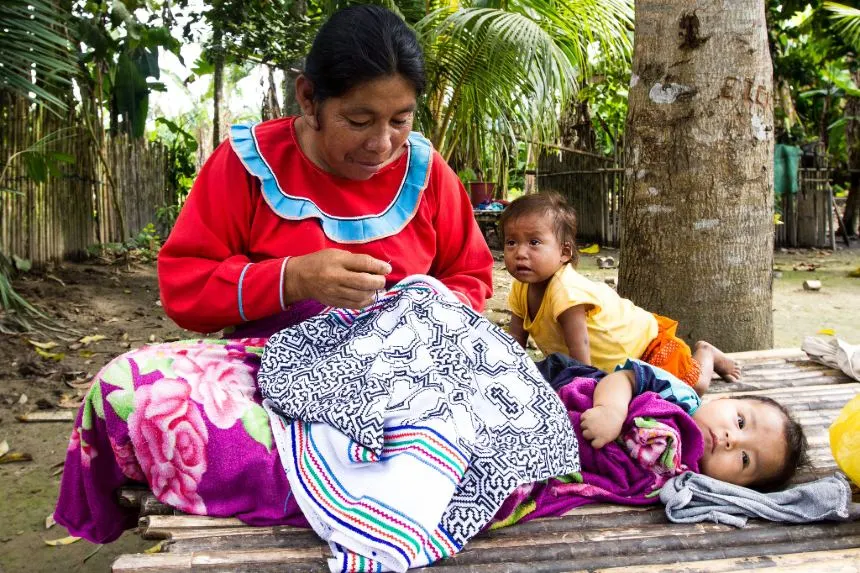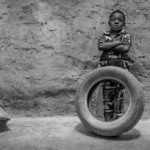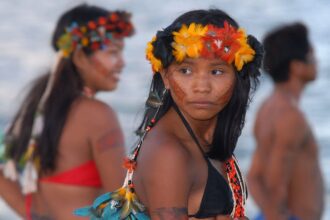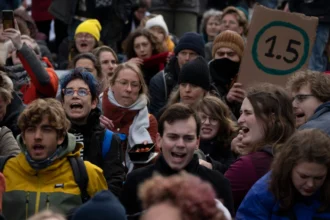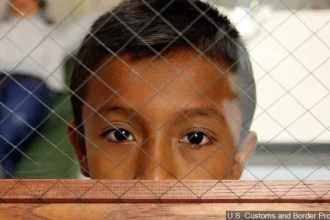Introduction
The United Nations (UN) human rights bodies have increasingly focused on the impact of climate change on human rights, with vulnerability framing emerging as a central concept. This approach has become prominent in discussions concerning how climate change disproportionately affects specific populations. Vulnerability framing is particularly prevalent in policy documents, reports, and case law addressing the intersection of human rights and environmental change.
This article aims to dissect the application and implications of vulnerability framing within UN human rights discourse on climate change. By analyzing various UN documents, the study seeks to understand how vulnerability is defined, to whom it is applied, and its relationship with concepts of inequality and discrimination.
Vulnerability is often depicted as a condition exacerbated by factors such as poverty, lack of access to resources, and socio-political marginalization.
The exploration will provide insights into the narratives constructed around vulnerable groups and the potential consequences of these narratives on human rights practices. Furthermore, the analysis will examine whether the emphasis on vulnerability contributes to or undermines the principles of equality and non-discrimination, fundamental to international human rights law. This investigation is crucial for assessing the effectiveness and impact of the vulnerability framing in advancing human rights in the context of global environmental challenges.
Climate Change and Human Rights
The intersection of climate change and human rights garnered substantial attention with the adoption of Resolution 7/23 by the UN Human Rights Council (HRC) in 2008. This resolution marked a pivotal moment, emphasizing the immediate and long-term threats posed by climate change to human rights. It specifically highlighted the disproportionate impact on vulnerable populations, recognizing that those already in precarious situations are more severely affected by environmental changes.

Subsequent UN reports and resolutions have consistently employed vulnerability framing, particularly concerning groups such as women, children, and indigenous peoples. For instance, the 2009 report by the Office of the United Nations High Commissioner for Human Rights (OHCHR) extensively used the concept of vulnerability, particularly in relation to these vulnerable groups. This report outlined how these groups face heightened risks due to their socio-economic conditions and geographical locations, which exacerbate their exposure to climate-related hazards.
Continuously labeling women or indigenous peoples as vulnerable can perpetuate a view of these groups as inherently weak or passive.
The framing of vulnerability within these documents serves to underscore the unequal burden of climate change. Vulnerability is often depicted as a condition exacerbated by factors such as poverty, lack of access to resources, and socio-political marginalization. This framing not only identifies who is most at risk but also aims to mobilize international support and resources towards mitigating these risks. For example, subsequent resolutions have called for integrating human rights considerations into climate change policies, ensuring that the needs and rights of vulnerable populations are prioritized.
Additionally, the UN has focused on the concept of climate justice, which seeks to address the disparities in climate change impacts. Vulnerability framing is central to this discourse, advocating for policies that recognize and rectify the inequalities faced by marginalized groups. The emphasis on vulnerability aims to foster a more inclusive approach to climate action, one that ensures the protection and promotion of human rights for all, particularly those most at risk from the adverse effects of climate change.
Defining Vulnerability
Vulnerability framing is a recurrent theme in UN documents, yet it often lacks precise definitions. When definitions are provided, they typically emphasize an individual’s or group’s reduced capacity to exercise human rights, influenced by factors such as poor health, poverty, or social exclusion. This perspective tends to focus on the intrinsic deficiencies of the affected individuals or groups, rather than the structural causes of their vulnerability.
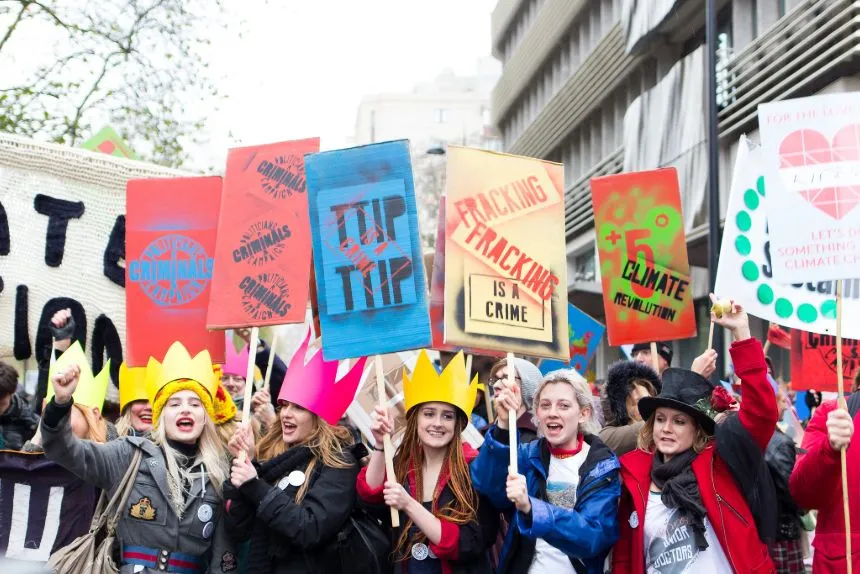
For instance, the report “The Slow Onset Effects of Climate Change and Human Rights Protection for Cross-Border Migrants” defines vulnerability in broad terms, concentrating on a person’s relative ability to effectively exercise their human rights. This understanding encompasses both situational and personal aspects, implying that increased vulnerability correlates with lower adaptive capacity. However, such definitions often remain vague, failing to delineate the specific conditions that render individuals or groups vulnerable.
Inequality and discrimination are often cited as underlying factors that exacerbate vulnerability.
Furthermore, the UN documents suggest a gradation in vulnerability, indicating that some individuals are more vulnerable than others. This is seen in references to “particularly vulnerable” or “most vulnerable” groups. Yet, the criteria for these gradations are rarely specified, leaving a significant degree of ambiguity.
This approach contrasts sharply with the definitions of discrimination and inequality in international human rights law, where the focus is on actions and structures that disadvantage specific groups, rather than on the perceived deficiencies of those groups. Discrimination is defined by the UN as any distinction, exclusion, or restriction based on various grounds that impair the recognition, enjoyment, or exercise of human rights on an equal footing.
By concentrating on the deficits of individuals, the vulnerability framing risks reinforcing a narrative that these groups are inherently weak or incapable, rather than highlighting the external conditions and systemic inequalities that contribute to their vulnerable status. This could potentially divert attention from necessary structural reforms and perpetuate a cycle where the root causes of vulnerability remain unaddressed.
Application to Specific Groups
UN documents frequently label specific groups as vulnerable, such as women, children, the elderly, migrants, and indigenous peoples. This categorization aims to draw attention to those most affected by climate change and to mobilize resources and policy interventions to support them. However, the criteria for these designations often remain ambiguous, which can perpetuate stereotypes and oversimplify the complexities of vulnerability.
The criteria for determining who qualifies as being in a vulnerable situation often lack clarity.
Historically, UN documents have referred to “vulnerable groups,” implying that vulnerability is an intrinsic characteristic of these populations.
For example, women are often highlighted as a vulnerable group due to gender-specific inequalities that exacerbate their risk to climate impacts.
Similarly, children are frequently categorized as vulnerable because of their dependency and developmental needs, which make them particularly susceptible to environmental hazards.
Over time, there has been a noticeable shift in terminology. Recent documents prefer the term “people in vulnerable situations” to highlight the contextual and situational factors that contribute to vulnerability rather than suggesting that vulnerability is an inherent trait. This shift aims to recognize that vulnerability is dynamic and can be influenced by a range of external factors, such as socio-economic conditions, geographical location, and political marginalization.
Despite this shift, the criteria for determining who qualifies as being in a vulnerable situation often lack clarity. For instance, documents may describe individuals or groups as vulnerable due to their “increased susceptibility to harm,” but they rarely specify what constitutes this increased susceptibility or how it is measured. This vagueness can lead to a broad and inconsistent application of the term, making it difficult to identify and address the specific needs of these populations accurately.
Moreover, this approach can inadvertently reinforce stereotypes. For instance, continuously labeling women or indigenous peoples as vulnerable can perpetuate a view of these groups as inherently weak or passive, overlooking their resilience and capacity for agency. Such framing risks simplifying the diverse experiences and capabilities within these groups, reducing complex social issues to simplistic narratives of vulnerability.
Vulnerability Framing in Relation to Inequality and Discrimination
Vulnerability framing, while a prominent concept in UN discourse on climate change and human rights, is not synonymous with inequality or discrimination. However, it is frequently linked to these concepts. Inequality and discrimination are often cited as underlying factors that exacerbate vulnerability, creating a cyclical relationship where heightened vulnerability can lead to further discrimination and inequality. This interconnectedness highlights the complex dynamics at play but also exposes the limitations of vulnerability framing compared to the more precise and legally grounded frameworks of equality and non-discrimination.
The cyclical relationship between vulnerability, inequality, and discrimination is particularly evident in discussions of climate change.
In the context of UN documents, inequality is typically understood as the unequal distribution of resources, opportunities, and rights among different groups. Discrimination, on the other hand, refers to the unjust or prejudicial treatment of individuals based on characteristics such as race, gender, age, or socio-economic status. Both concepts are well-defined within international human rights law, with clear legal obligations for states to prevent and address such injustices.
Vulnerability framing, however, often lacks such precision. While it aims to draw attention to those most at risk, it does not always provide clear criteria for identifying vulnerability or offer concrete legal standards for protection. For instance, documents may describe certain groups as vulnerable due to their increased susceptibility to climate impacts, but they often fail to specify the exact nature of this susceptibility or how it should be addressed in policy and practice.
Moreover, vulnerability framing can sometimes obscure the structural and systemic causes of inequality and discrimination. By focusing on the vulnerabilities of individuals and groups, there is a risk of attributing their disadvantaged status to inherent weaknesses rather than to external, structural factors that perpetuate their marginalization. This perspective can inadvertently reinforce a victim narrative, where the emphasis is on the need for protection rather than on empowering these groups to overcome the barriers they face.
The cyclical relationship between vulnerability, inequality, and discrimination is particularly evident in discussions of climate change. For example, marginalized communities often face greater exposure to environmental hazards due to their socio-economic status, which in turn heightens their vulnerability to climate impacts. This increased vulnerability can lead to further exclusion and discrimination, as these communities are often overlooked in policy responses and resource allocation. Thus, their initial disadvantage is compounded, creating a vicious cycle of vulnerability and inequality.
Despite the frequent linkage of these concepts, the use of vulnerability framing lacks the robustness of equality and non-discrimination frameworks. The latter are grounded in established legal principles and standards, providing a clear basis for accountability and redress. Vulnerability framing, while valuable for highlighting those most at risk, needs to be more explicitly connected to these legal frameworks to ensure it does not inadvertently perpetuate the very inequalities and discriminations it seeks to address.
Narratives of Vulnerability
The framing of vulnerability in UN documents mobilizes narratives centered around harm, suffering, and victimhood. These narratives often emphasize the adversities faced by vulnerable groups, depicting them as passive recipients of harm who require protection and assistance. This perspective can inadvertently reinforce negative stereotypes and diminish the perceived agency and resilience of these populations, highlighting a critical issue with vulnerability framing.
UN documents frequently portray vulnerable individuals and groups as being in a constant state of distress, facing numerous challenges such as poor health, malnutrition, and exposure to violence. For example, older persons are often depicted as particularly susceptible to diseases and physical strain due to climate change. Similarly, women and girls are frequently portrayed as at higher risk of food insecurity, sexual violence, and exploitation, particularly during displacement caused by environmental factors.
Vulnerability framing often fails to adequately address the structural causes of vulnerability.
Moreover, by concentrating on the immediate harms and adversities, vulnerability framing can obscure the underlying structural causes of these conditions.
It often fails to address the systemic inequalities and power dynamics that contribute to vulnerability in the first place.
For instance, the repeated emphasis on the vulnerabilities of women and children might overlook the broader socio-economic and political factors that perpetuate gender inequality and marginalization.
This victim-centric narrative also has implications for policy and practice. Policies designed based on such narratives may prioritize short-term protective measures over long-term strategies that empower vulnerable groups and address structural issues. While immediate protection is crucial, it is equally important to implement policies that enhance the resilience and agency of these groups, enabling them to participate actively in addressing the challenges they face.
Conclusion
The widespread use of the concept of vulnerability framing in UN human rights discourse on climate change carries significant implications. On one hand, it effectively draws attention to the disproportionate impacts of climate change on specific groups, thereby mobilizing support and resources aimed at mitigating these adverse effects. By highlighting those most at risk, vulnerability framing can help prioritize interventions and bring urgent issues to the forefront of policy discussions.
However, there are also notable risks associated with this approach. The repeated labeling of certain groups as vulnerable can perpetuate negative stereotypes, portraying these populations as inherently deficient or perpetually in need of protection. This perspective overlooks the agency, resilience, and capacity for self-determination that many of these individuals and communities possess. Consequently, it can reinforce a narrative of victimhood, which may undermine efforts to empower these groups and enable them to actively participate in addressing the challenges they face.
Moreover, vulnerability framing often fails to adequately address the structural causes of vulnerability, such as systemic inequality and discrimination. By focusing on the immediate vulnerabilities of individuals and groups, there is a risk of neglecting the broader socio-economic and political factors that contribute to their marginalized status. This oversight can result in policies that prioritize short-term protective measures over long-term, sustainable solutions that tackle the root causes of vulnerability.
To advance human rights effectively in the context of climate change, it is crucial to integrate vulnerability framing with a comprehensive approach that addresses these structural issues. This means moving beyond simplistic categorizations and developing policies that not only protect vulnerable groups but also empower them. Ensuring that vulnerability framing does not undermine the principles of equality and non-discrimination requires a nuanced understanding of the complex interplay between individual vulnerabilities and broader systemic factors.
In summary, while vulnerability framing is used as a tool for highlighting the disproportionate impacts of climate change on marginalized groups, it must be applied carefully to avoid reinforcing stereotypes and neglecting structural causes. By adopting a more holistic approach that combines immediate protection with efforts to address systemic inequalities, the UN can more effectively promote human rights and foster resilience in the face of climate change.
Adapted from an academic article for a wider audience, under license CC BY 4.0


